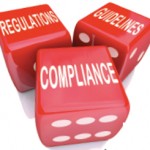Start with observation. Practice managers should observe the practice through the eyes of a patient. Every aspect—from making an appointment to checking out—should be observed and noted for any deficiencies or areas to improve. Look for the following in the waiting room or patient care areas:
- Notice of Privacy Practices posted in a prominent area and offered to all new patients;
- Front office staff who avoid using patient identifiers or having loud conversations;
- Adherence to new patient requirements (collection of photo identification; insurance information; emergency contact details; race, ethnicity or language information);
- Playing of a TV, radio or some sort of distraction to avoid incidental protected health information disclosures;
- Magazines that are not offensive;
- Adequate seating provided for patients with special needs;
- Doorways and walkways wide enough for disabled persons;
- Handrails in restrooms and handicap-accessible stalls; and
- Interpreters who can be made available for those who need them.
Other areas of risk to address include ensuring that everyone knows the structure of the building as well as the protocol for issues that arise, which can include the following questions:
- Does everyone know where all the exits are located?
- Are the exits well identified?
- Is there an office emergency management plan?
- Does everyone know what to do in case of fire?
- Are fire extinguishers visible and located in key areas?
- Are there clear steps to report when a patient has a complaint?
- Does everyone know what to do if a patient falls in the exam room?
- How often does the practice test emergency eye wash stations?
- Is there a reconciliation process for billing and appointments?
These are all part of the risk assessment process. Training and education should be mandatory at least once a quarter for staff to be knowledge and equipped to respond to any of the above.
The Importance of Ethics
There is a fine line between compliance and ethics. Compliance refers to conforming to applicable laws, regulations, policies, standards, procedures or contractual obligations, and could be in the form of external (local, state, federal or third-party) or internal obligations. Effective risk management relies on everyone understanding that compliance with external obligations is a critical component. This helps the practice to better prevent, detect, contain and correct any noncompliance issues that could damage its viability.
Ethics refers to the moral principles and values that guide a person or an organization. Ethical conduct shows that a person knows the difference between right and wrong and chooses to do what is right. It’s extremely important for practices to show employees that leadership, starting from the top, is on board with a compliance program. This will lay the foundation for building a culture of compliance within the organization.


